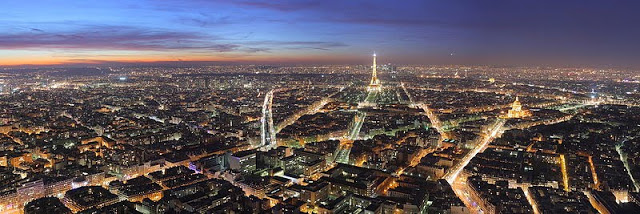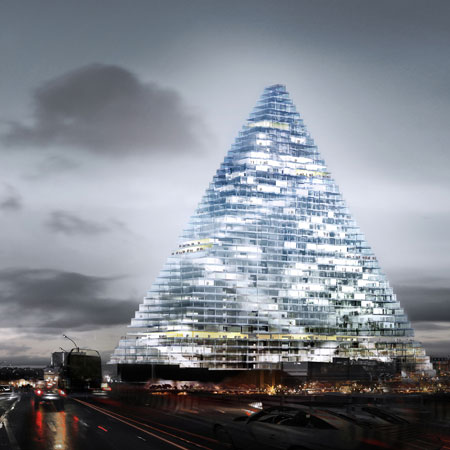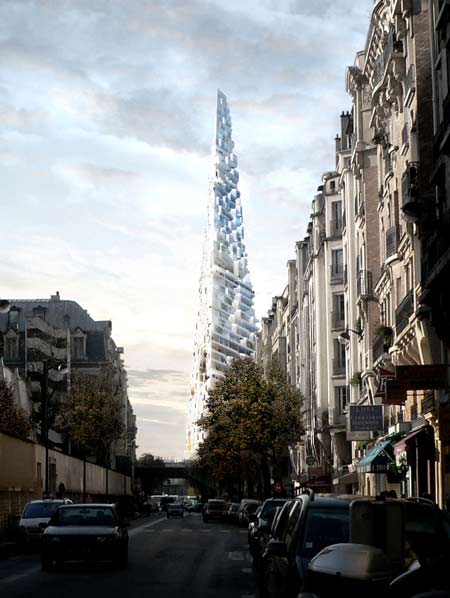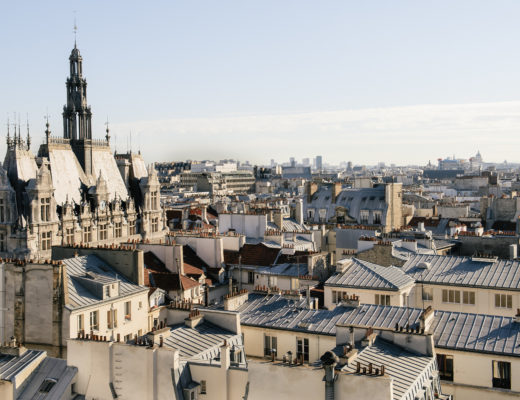Imagine my dread, then, when I read in the IHT last week that Sarkozy relaunched a project called “Le Grand Paris” which would include the construction of more tall buildings and rescinding the laws against towers. I say relaunch because Sarkozy initially announced his plan for a new “comprehensive development project for a Greater Paris” in 2007 before 10 architectural teams went to work developing mock-ups of Sarkozy’s vision. Supporting the President’s ambitions is the Socialist mayor Bertrand Delanoë who expects the tall buildings to attract more corporate money. All of this sounds suspiciously familiar. Oh right, Sarkozy’s idol, Napoleon III, has Paris torn down and reconstructed with large boulevards.
is a 600-foot-tall ultra-modern pyramid structure in southwest Paris (about five miles from the Louvre) that is so thin from the side it hardly casts a shadow. The building will hold offices, a conference center, and a 400-room hotel.
Sounds like a repeat of the Montparnasse Tower mistake. Just look at the juxtaposition of modern and classic architectural styles. Le Projet Triangle looks like a Toblerone chocolate bar made out of legos!
I agree with critics who argue that dramatic new architecture would damage the city’s world-renowned charm and don’t agree that such changes are necessary to compete with other leading global cities, like London, Tokyo, and New York. Each of these cities has their own appeal and their own stories. As much as Manhattan is bustling, fun and lively, I would not go so far as to call it beautiful. People from all over the world dream of living their own Parisian fantasy and some actually make it a reality. But would the allure still be as noteworthy if the vistas were marred by ultra-modern towers?
I get it, though. It’s not all about the view. It’s economics. A question of limited space for a growing population. Rent will inevitably go up if something isn’t done. But I’m not convinced that the city’s and people’s best interests are actually motivating these plans. Sounds like the coupling of architectural ego and Sarkozy’s Napoleonic-urge to leave a visible and lasting mark on the city before the end of his term.
In the very least, the historic city-center should be preserved and left untouched. I’m all for finding a solution to the plaguing housing crisis and malignant suburban transportation, but is Dubai-ifying the most of Paris really necessary and inevitable? Where are the French protesters when you need them?














